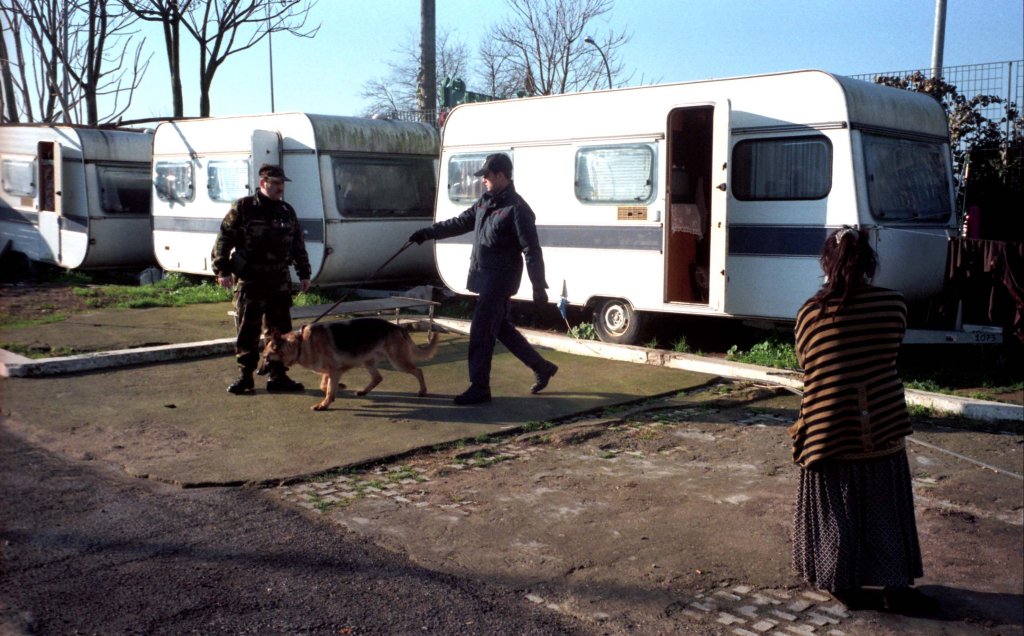Combating Hate Crime against Roma in the Courts
13 January 2016
All over Europe Roma face aggressive hate speech, and all too often Roma are subjected to racist violence. This holds true not only across Central and Eastern Europe but also in Western European countries such as Italy where the situation remains troubling. In the past three years, Italy has witnessed cases of violence by law enforcement officers against Roma, attacks on Roma camps and dwellings, and assaults against Roma individuals.
 In a context in which there is a rise in anti-Roma rhetoric, racism and violence, the acknowledgment and condemnation of racially biased crimes by courts is to be welcomed because official condemnations, just like hate crimes themselves, have an impact that reaches far beyond the individual victims. From one perspective hate crimes instil fear in entire groups and undermine core human rights values; from another, public condemnation sends an important and reassuring signal not only to the community directly threatened by hate-bias crimes, but to the entire society that such crimes are repugnant and will not be tolerated.
In a context in which there is a rise in anti-Roma rhetoric, racism and violence, the acknowledgment and condemnation of racially biased crimes by courts is to be welcomed because official condemnations, just like hate crimes themselves, have an impact that reaches far beyond the individual victims. From one perspective hate crimes instil fear in entire groups and undermine core human rights values; from another, public condemnation sends an important and reassuring signal not only to the community directly threatened by hate-bias crimes, but to the entire society that such crimes are repugnant and will not be tolerated.
This is the signal sent by a recent court judgment in the “La Continassa” case in which the Turin Criminal Court found people guilty of a violent assault on a Roma camp.
The judgment marks an important achievement in two aspects: first because the Court of Turin convicted at first instance the identified perpetrators of the atrocities committed towards a Roma community living in a long standing informal settlement in the suburbs of this northern Italy industrialised city; and despite the fact that such assaults are commonplace in Italy, we have no knowledge of prior convictions of this kind.
While hate crimes are often not investigated properly, and racist motives are often ignored in cases of violence against Roma, in this case the Italian court acknowledged the aggravating circumstance of the racist motivation as provided by Law 205/93. The court made reference to several factors which clearly revealed the anti-Roma motivation behind these acts such as insults, verbal racist abuse and threats of violence that clearly prove hate bias.
The second aspect that deserves our attention and interest was revealed in the motivation of the judgment, issued in early October 2015. The court clearly points to the failure of the authorities to protect the community from the attack. The court stated that law enforcement underestimated risks and dangers to which Roma living in La Continassa were exposed, and that the small number of officers involved actually encouraged an upsurge in violence that led to the events condemned in this decision.
This acknowledgment by the judge of “La Continassa” case of the failure of law enforcement to protect the Roma community highlights an issue that is particularly relevant in the fight against anti-Gypsyism. Law enforcement officers have a pivotal role to play, as they are usually the first intervening to protect or to respond to hate crime incidents. Their intervention or inaction significantly affects the evolution of events as well as the community’s response to the incident. An unsatisfactory and inadequate response from law enforcement and public authorities may be rooted in institutional racism, harmful prejudice and discrimination, which is even more insidious and difficult to eradicate.
The failure to investigate cases of violence against Roma is indicative of the scale of institutional racism, and it is important to stress that in addition to law enforcement officers, there is a key role for prosecutors and domestic courts to play in the fight against anti-Gypsyism by acknowledging and investigating hate bias in crimes against Roma.
This was recently confirmed by the European Court of Human Rights in the case BALÁZS v. HUNGARY that condemned Hungary for discrimination resulting from the failure to investigate a racist attack against a Roma by a man claiming to be a police officer.
In this case, the Court reaffirmed once again that Roma have become a specific type of disadvantaged and vulnerable minority and therefore require special protection. But, more importantly it clearly states that “the obligation on the authorities to seek a possible link between racist attitudes and a given act of violence is part of the responsibility incumbent on States under Article 14 of the Convention taken in conjunction with Article 3, but it is also an aspect of the procedural obligations flowing from Article 3 of the Convention” (§ 54) and that in this case “the effect that the ineffectiveness of the investigation stems precisely from the fact that the authorities insufficiently investigated the racist aspects of the acts of violence, the Court considers that the complaint should be considered from the angle of Article 14 read in conjunction with Article 3 of the Convention” (see §§ 54 and 55).
ERRC took an active role in both the “La Continassa case in Turin and the Balázs v. Hungary case in Strasbourg. These decisions taken together provide a quite complete and exhaustive frame of what is expected of States, and their precise obligations in dealing with racially motivated hate crimes. The importance of these decisions lies in the insistence that authorities acknowledge and condemn hate bias in crimes against Roma; and that it is incumbent upon them to investigate the link between racist attitudes and acts of violence. It is to be hoped that these judgments will also shine a light on institutional racism and practices that impede access to justice for Roma victims of hate crime.




